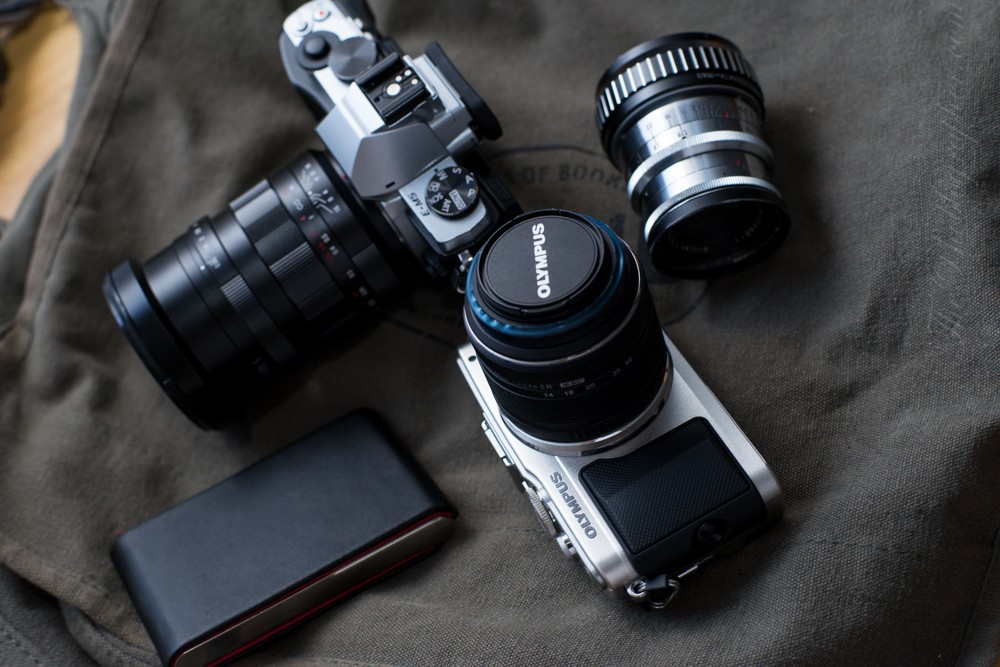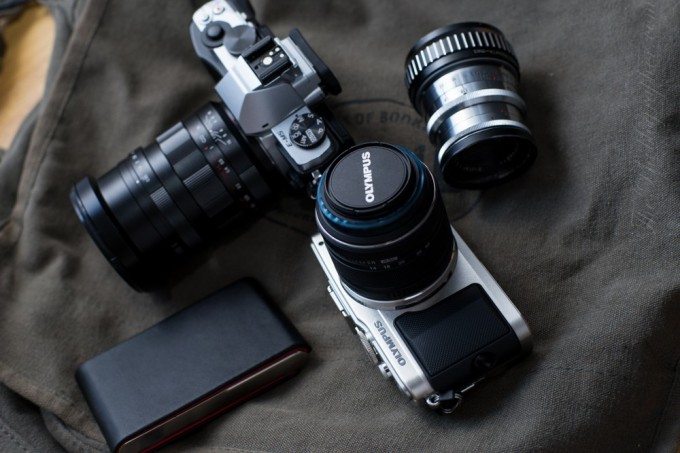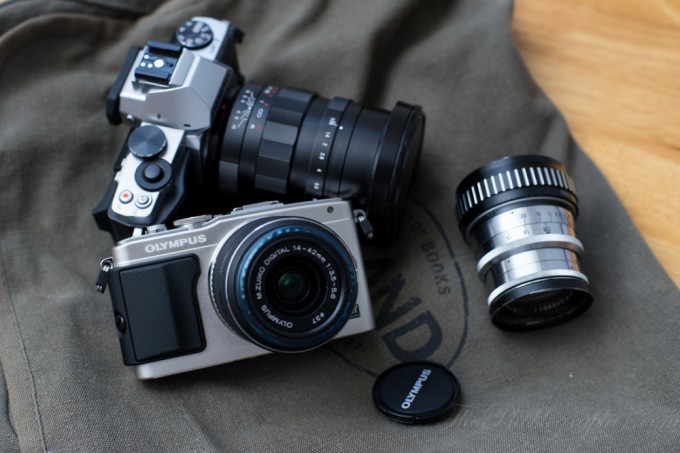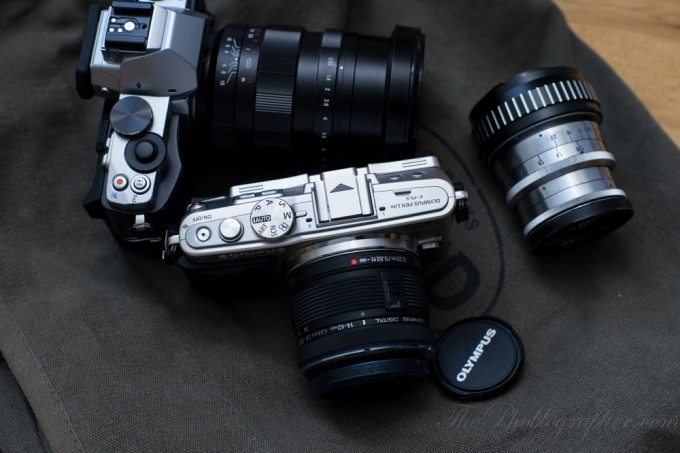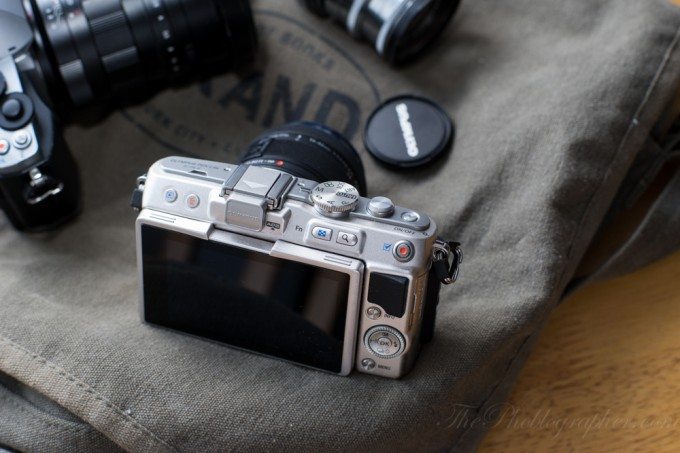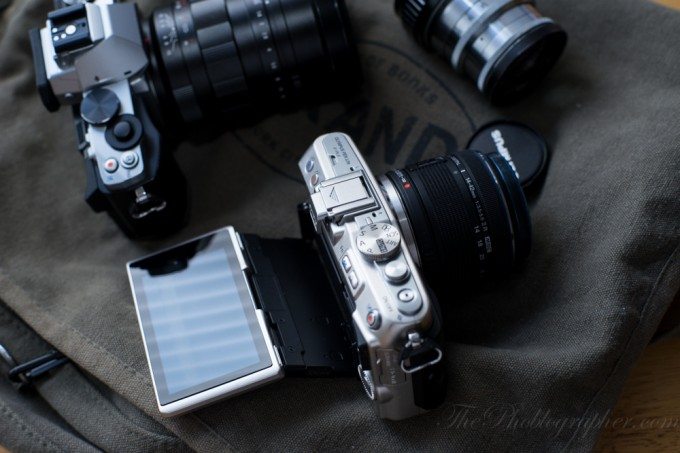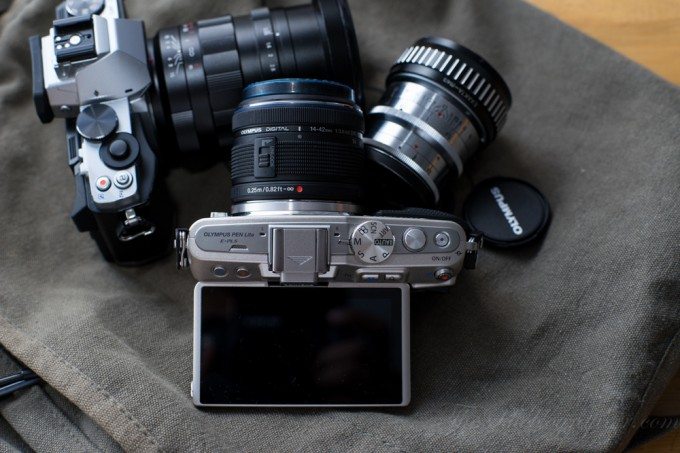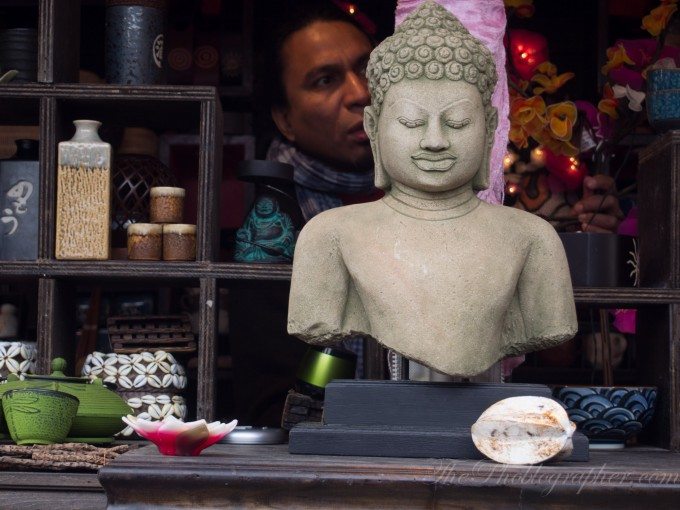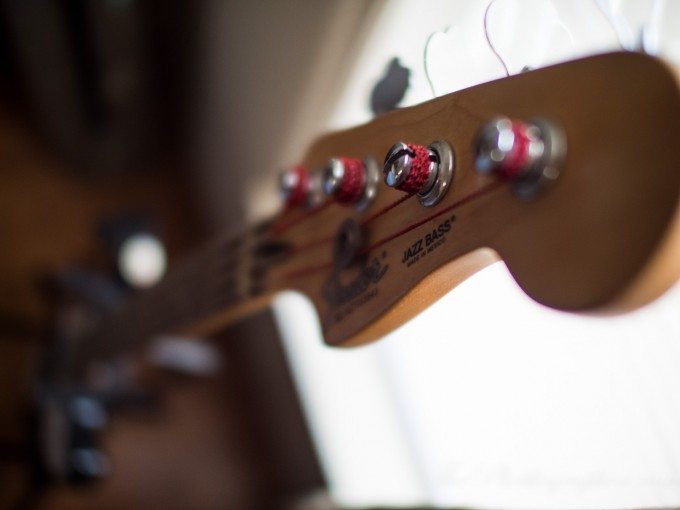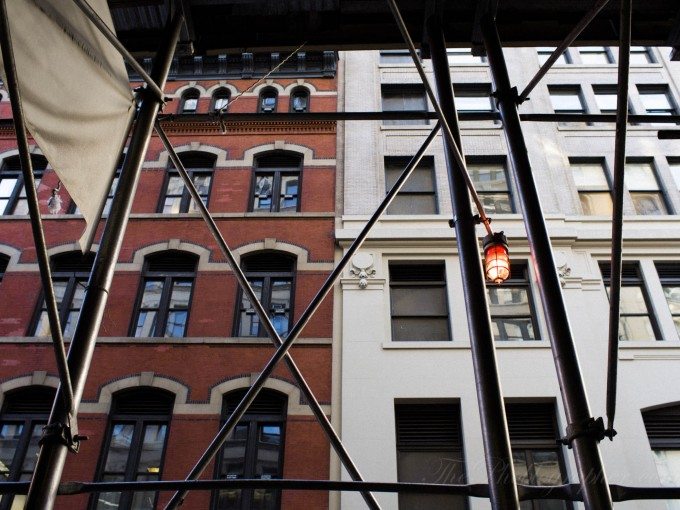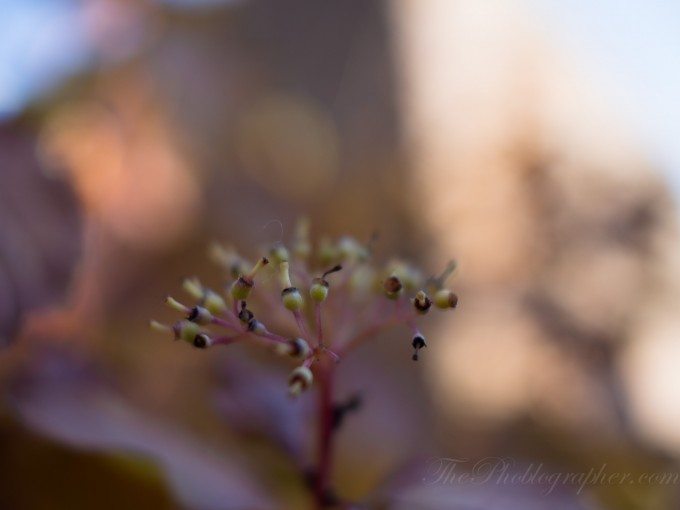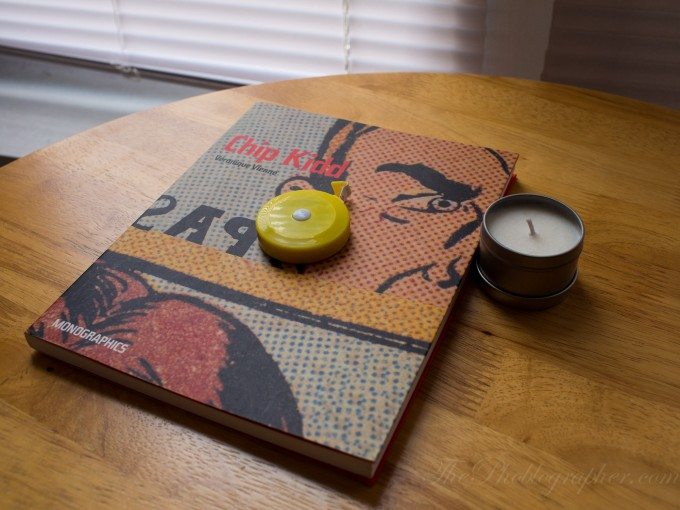Last Updated on 12/03/2012 by Chris Gampat
The Olympus EPL5 is the successor to the very successful EPL3. Though it was previously stated that the camera didn’t have an Anti Aliasing filter, it actually does but it is weaker than in previous cameras and so retains extra details in the images. The body is compact, sleek, and has an LCD screen that veteran photographers may actually take quite the liking to.
The Olympus EPL5 has a lot going for it and is designed for a multitude of users. But is it worthy of being in your hands?
Pros and Cons
Pros:
– Lightweight even with the heaviest of lenses
– Fast to focus
– LCD screen and overall ergonomics make it seem like a TLR
– Excellent Image Quality
Cons:
– Too small for my hands
– Plasticky feeling
– Really wish it came with a prime lens kit
Gear Used
For this review we used the Olympus EPL5 with the 14-42mm kit lens along with the Voigtlander 17.5mm f0.95. A short studio test was done using the Paul C Buff Einstein E640 set off by Pocket Wizard Plus III units.
Tech Specs
Specs taken from the B&H Photo Video listing
| Focus Control | |
|---|---|
| Focus Type | Auto & Manual |
| Focus Mode | Single-servo AF (S), Continuous-servo AF (C), Manual Focus (M) |
| Autofocus Points | 35 |
| Viewfinder/Display | |
|---|---|
| Viewfinder Type | None |
| Display Screen | 3.0″ Rear Screen Tilting LCD (460000) |
| Screen Coverage | 100% |
| Live View | Yes |
| Power | |
|---|---|
| Battery | 1x BLS-5 Rechargeable Lithium-Ion Battery Pack |
| Operating/Storage Temperature | Operating 32 to 104 °F (0 to 40 °C) Humidity: 30 – 90% |
| Physical | |
|---|---|
| Dimensions (WxHxD) | 4.4 x 2.5 x 1.5″ / 11.1 x 6.4 x 3.8 cm |
| Weight | 11.46 oz / 325 g |
Ergonomics
The Olympus EPL5 is a small camera that takes the idea of the popular Olympus Pen series and supercharges it in many ways. This new iteration borrows ideas from the old EP3 and the new Olympus OMD EM5. For example, there is an interchangeable grip on the front of the camera as well as a lens release button. Otherwise, it’s all just plain jane.
The top of the EPL5 is also fairly simple: all you’ve got is the hot shoe, mode dial, shutter release and a very interestingly positioned on/off switch. It is just high enough to not be accidentally pressed.
The back of the camera is where lots of the controls are. For starters, you’ve got the playback and trash button on the top left. Adjacent from that are the zoom in and out buttons along with the one touch video record button. Below all that is the menu, info, and control dial button area. Just above this is a textured area for better grip. However, I wish it were a bit larger and more like the EM5’s.
Then there is the giant LCD screen. The screen can flip up and down; and be used to control lots of settings. It’s quite a joy to use when composing and focusing.
When out on the streets, my preference was shoot like this with the screen up and the camera at my waist.
Build Quality
The overall build quality of the EPL5 feels very plasticky. Also, the camera was a bit small for my hands and at times was a bit uncomfortable to hold unless it was set to shoot from my waist. If held like a proper point an shoot, it became annoying to hold with outstretched arms that still remained tucked in close to my body. However, that is how many people may actually use the camera and for prolonged use, it may not be so comfortable on their thumbs and index fingers.
Ease of Use
Despite my slight ergonomic issues, the camera was overall very simple to use. However, I am a veteran Olympus shooter. If put in the hands of someone new to the system but that has lots of experience shooting (and I did) it became tedious to use. For someone that puts it in auto and shoots away to their heart’s content, it wasn’t such a problem.
Olympus’s unlockable menus contain loads of control over the camera but once you enter them it seems like you’re navigating a cave with deadly mummies out to get you; and all you’ve got is your torch to fend them off.
Autofocusing
To make best use of the camera’s autofocusing abilities, we really recommend that one uses the touchscreen combined with the touch to shoot ability. That way the camera can know exactly what you want in focus and work with the lens accordingly to do so. This will come in lots of use when you’re photographing on the streets or moving subjects like dogs or kids. In our tests though, this was still best done with a prime lens than this zoom. For the absolute best results, spring for one of Olympus’s MSC prime lenses. Despite the fact that the 14-42mm may have lighter elements, the image quality isn’t always up to standard and it may not always capture the subject that you want in focus.
One of the biggest joys of shooting with this camera though has to be manually focusing. Olympus, unlike Panasonic, does not have peaking built into their cameras at the moment of publishing this piece. However, if one navigates through the menus to turn on fast FPS for the LCD screen, they can get a better manual focusing experience. Focus with nearly any manual focus lens (and many micro four thirds users love to do this) and you can attain a type of focus peaking that won’t require you to turn on the magnification.
In previous Pen cameras, you had to do this with a not-moveable screen. However, now you can flip the screen up to make this ergonomically easier for you and therefore also achieve steadier shots.
Metering
In multiple Sunny 16 metering tests, the camera tended to underexpose by -0.3; which is very standard and perhaps has something to do with the Sony sensor. Many of their sensors did this until the A99 came out.
When we took it into the studio and used it with a handheld light meter, we found that the camera tended to capture more detail in the highlights than the shadows.
Image Quality
Overall image quality from the Olympus EPL5 is really quite good and there are very little complaints that can be said for it. However, there needs to be one big if stated in order to get the best images. The EPL5 comes with what I believe to be a very subpar kit lens. Indeed, the 14-42mm can be good, but the performance isn’t consistent. Want the best images? Spring for a prime lens like the Panasonic 20mm f1.7 or Olympus 17mm f1.8. I used my Voigtlander 17.5mm f0.95 to get a lot of these images.
In the crazy situation where you might want to set this camera up in a studio situation, know that quite a bit of detail can be resolved from the sensor when the right amount of specularity is added to your subject.
Here are a couple more image samples:
High ISO Results
At the moment of publishing this piece, there is some confusion as to what the real highest ISO setting should be. What do I mean by that? Well, I received what is called a Champion sample of the camera. These are some of the first off of the production line. The camera’s highest native ISO setting should be 6400. However, mine and my Olympus rep’s are actually 5000 until it starts labelling 6400 as the extended range. With that in mind, the highest ISO setting I shot at with this camera was 3200.
At ISO 3200 you’ll start to see quite a bit of grain but it isn’t terrible at all. However, in order to get rid of most of the noise you may need to push your files a bit further than you’re used to doing in Lightroom 4.
Here are a couple more samples:
Raw File Versaility
Even at high ISO settings, the EPL5 still has quite a bit of versatility in its color processing without introducing loads more noise. This is a problem that can happen often and has always been a known issue with white balancing.
The image that starts out this section is closer to what the camera captured. And the image directly above of the glass and my phone are what I processed. It gave it a slightly cross processed look that I was very happy with in the end. If anything, it goes to show you just how far the files can be pushed at higher ISOs.
But what about lower ISO settings? Well, the camera has quite a bit of versatility and it is extremely easy to recover highlights within a stop and a half; and in some cases even a stop and 3/4ths. Then when you want to add some extra sharpening to the image or boost the blacks to increase perceived sharpness, you can really get some awesome images. The typical user will be more than ecstatic with the image quality output from the EPL5 and will please all except those that try to push their raw files to the extremes. To be honest, no APS-C camera or Micro Four Thirds cameras I’ve seen can even do that except for the Fujifilm X Pro 1. If you want to get very experimental, you’ll need to move up to the full frame game.
Conclusions
The Olympus EPL5 is a really excellent camera and the company got a lot right in its creation. The excellent image quality combined with its awesome autofocusing abilities and the beautiful LCD screen make this a real winner in my book. However, the menus are still a bit too thick for my liking, as is the camera. The EPL5 is significantly thicker than previous pen cameras, and doesn’t even fit in my premium pen case. Also, I really wish that the LCD screen were a higher resolution.
Many people will like this though: the camera has excellent battery life. With that said, it also has a brand new battery: in fact, it is larger than the OMD EM5’s. And that is very weird.
Though the image quality isn’t as good as its competitors from Fujifilm and Sony, it still is very good and it can only get better from here on.
You can purchase one at B&H Photo, Adorama or Amazon.
Please Support The Phoblographer
We love to bring you guys the latest and greatest news and gear related stuff. However, we can’t keep doing that unless we have your continued support. If you would like to purchase any of the items mentioned, please do so by clicking our links first and then purchasing the items as we then get a small portion of the sale to help run the website.


